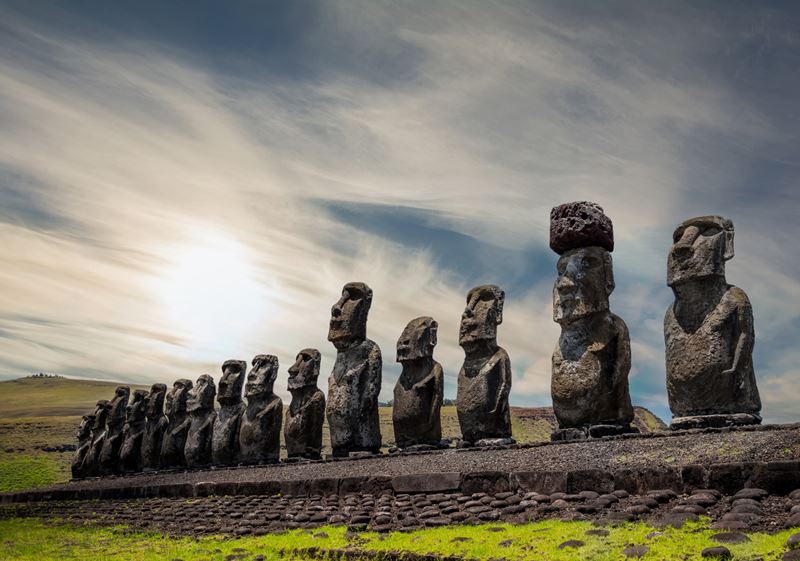Easter Island's Unexpected Viticultural Heritage
Sparkling Wine Revives Lost Tradition
2024-04-05

Nestled in the vastness of the Pacific Ocean, Easter Island, known locally as Rapa Nui, is rewriting its narrative, this time with a vinicultural twist. Far from the mainland and famed for its enigmatic moai statues, the island harbors a lesser-known treasure — wild grapevines that whisper tales of a bygone era, recently identified and poised to reshape our understanding of viticulture in remote locations.
In a groundbreaking study released just in time for the Easter weekend, researchers have unveiled the presence of six distinct grape varieties on Easter Island, dating back to the 19th century. Among these are the País and Moscatel de Alejandría vines, direct descendants of the first Vitis vinifera species planted in the Americas. These are accompanied by three native Criolla varieties, and a mysterious sixth type, which, while its exact origins remain unidentified, is believed to boast direct European ancestry. This eclectic mix of grape varieties suggests that Easter Island's viticultural heritage likely sprang from seeds sown by Chilean influence, albeit with a dash of European mystery.
The old vines, unattended for over a century yet resilient, continue to bear fruit, particularly around the scenic Rano Kau crater. Despite historical accounts of vineyards dotting the island landscape in the late 1800s, the departure of missionaries in the early 20th century marked the beginning of a long hiatus in winemaking endeavors. Until now, it remained unclear whether these vineyards ever fulfilled their potential in wine production, though speculations by Commander Ignacio L. Gana in 1870 suggested that the island's climate might rival that of Madeira for viticulture.
This narrative took a vibrant turn six years ago when winemakers Alvaro Arriagada and Fernando Almeda, in collaboration with local partners, infused new life into this ancient tradition. By planting new vines and nurturing the wild ones back to health, they not only paid homage to the island's viticultural legacy but also crafted the first vintage of Rapa Nui sparkling wine. This inaugural batch, though modest in quantity, symbolizes a renaissance of Easter Island's wine production, marrying tradition with innovation.
The discovery of these historic grape varieties and the successful cultivation of new vines mark the beginning of an exciting chapter in the island's history. The research findings not only provide a fascinating insight into the genetic makeup of Easter Island's grapevines but also highlight the island's potential as a unique winemaking locale. As the world turns its gaze towards Easter Island once again, it's not just the iconic moai that command attention but also its burgeoning vineyards, promising a future where wine becomes as integral to its identity as its ancient sculptures.
Easter Island's venture back into winemaking is more than just an agricultural achievement; it's a cultural revival, reconnecting the islanders with a segment of their history that had been lost to time. As these ancient vines find new life and yield their first wines in over a century, they weave a tale of resilience, heritage, and the unyielding bond between land and people. With each bottle of Rapa Nui sparkling wine, Easter Island toasts to its past and its future, inviting the world to savor a taste of its storied lands.
Founded in 2007, Vinetur® is a registered trademark of VGSC S.L. with a long history in the wine industry.
VGSC, S.L. with VAT number B70255591 is a spanish company legally registered in the Commercial Register of the city of Santiago de Compostela, with registration number: Bulletin 181, Reference 356049 in Volume 13, Page 107, Section 6, Sheet 45028, Entry 2.
Email: [email protected]
Headquarters and offices located in Vilagarcia de Arousa, Spain.